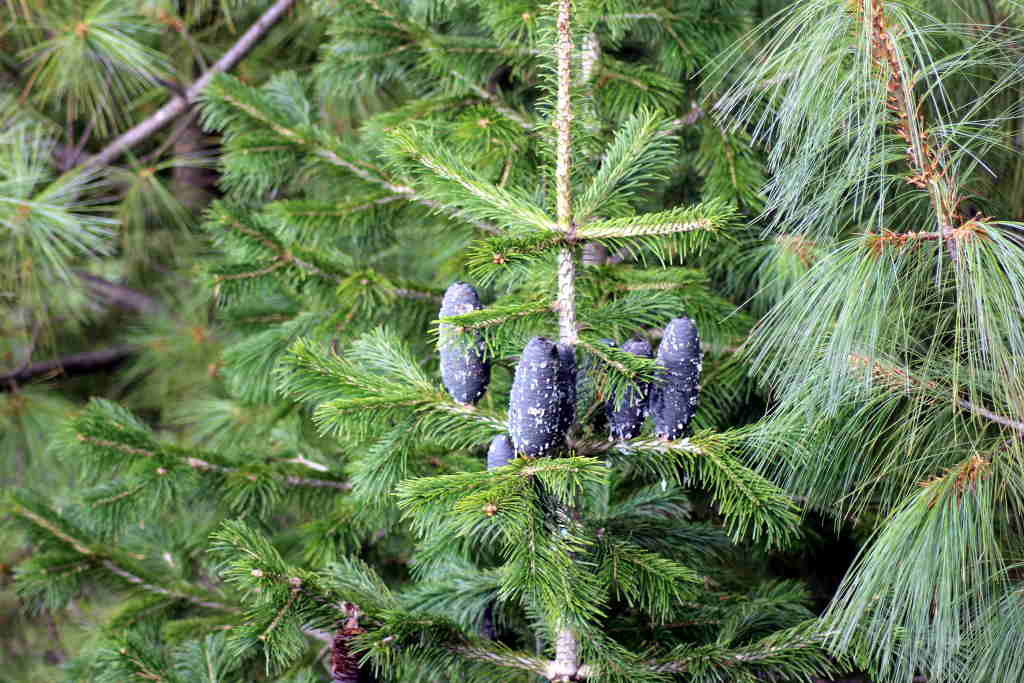
Abies pindrow (Tosh)
Abies pindrow (Tosh), commonly known as the Himalayan fir, is a majestic coniferous tree native to the western Himalayan range, including regions within the Great Himalayan National Park (GHNP). This towering evergreen plays a crucial ecological role in temperate forests, offering both shelter and nourishment to a wide range of wildlife.
Found at altitudes between 2,000 and 3,300 meters, Abies pindrow (Tosh) can grow up to 60 meters tall. It is recognized by its straight trunk, dense conical crown, and dark green needle-like leaves with silvery undersides. Its cones are upright and cylindrical, turning brown when mature and disintegrating to release winged seeds.
| Local name | Tosh |
| Botanical name | Abies pindrow |
| Family | Pinaceae |
| Description | It is a large tree found between 2100-3300m with smooth hairs on the stem. Bark dark grey, rough with deep vertical furrows on old stem, branches glabrous, Leaves 4-7 cm long. Flattened, shining, dark green above with two faint silvery lines beneath, tip notched. Male and female cones are on the same tree. |
| Flowers & Fruits | April-May |
| Distribution | Usually forming a mixed forest with Picea smithiana in the temperate belt in all the valleys of GHNP |
| Use | Used in some of the local medicines. |
In GHNP, the Tosh tree is a dominant species in mixed forests, often found alongside deodar (Cedrus deodara), blue pine (Pinus wallichiana), and spruce (Picea smithiana). These forests support diverse animal life including the Himalayan black bear, musk deer, and several high-altitude bird species.
The wood of Abies pindrow is light and soft, historically used for construction, packing, and paper pulp. However, the tree holds more value as a key part of the park’s natural ecosystem, aiding in soil stability and water regulation in mountainous terrain.
Due to logging and habitat loss in other parts of its range, Abies pindrow (Tosh) is now considered vulnerable in some regions. Protected zones like GHNP ensure this species can continue to thrive as part of the park’s conservation efforts.



